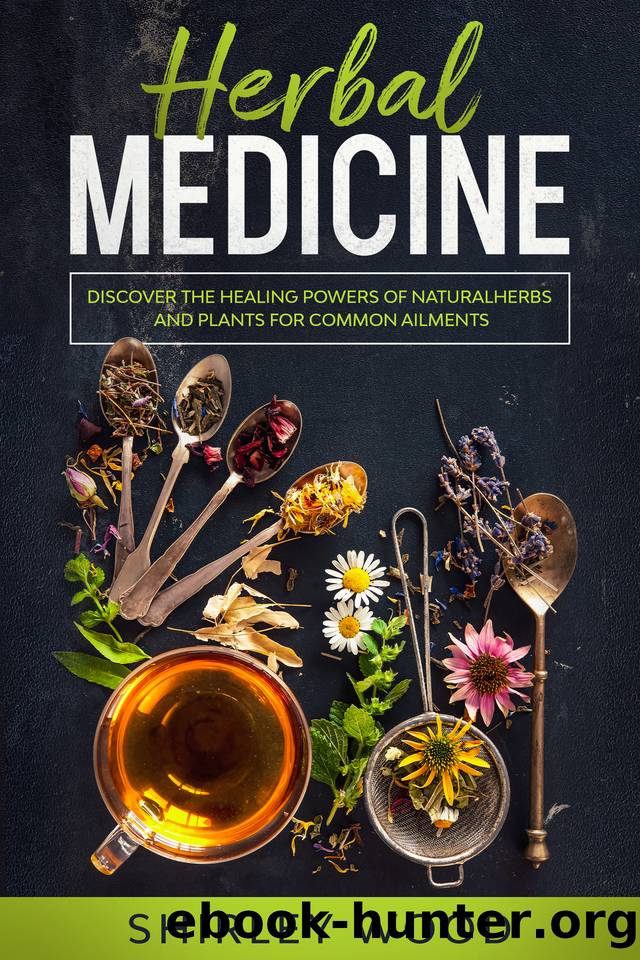Medical Herbalism: Discover the Healing Powers of Natural Medicine, Herbs, and Plants for Common Ailments by Wood Shirley

Author:Wood, Shirley [Wood, Shirley]
Language: eng
Format: epub
Published: 2020-11-05T00:00:00+00:00
India & the Middle East
There have been three prominent traditional medicine systems in Indian history: Ayurveda, Unani, and Siddha. All are important in the medical system of India. In 2013, 70% of the rural populations of the area relied on alternative medicines (Pandey et al., 2013). The use of traditional and natural remedies is so widespread due to the limited access to conventional medicine in terms of location and money, as well as for cultural reasons.
Using herbal medicine is relatively cheaper in countries where utilizing these remedies has been the norm for centuries. It is also more accessible since the knowledge is organically passed down through the generations. The Middle East is well-known for its traditional medical system known as Traditional Arabic and Islamic Medicine (TAIM). After being used in the area, it has slowly started gaining in popularity in other countries around the world.
Despite the recent attraction to herbal remedies and the move away from conventional medicine, there are not many scientific studies showing proof of the biological makeup of plant properties giving healing benefits, and Ayurvedic medicine is one that has not been explored much in the realm of Western science. However, it has been used since 2500 BCE in India and is still a trusted form of healing in the local areas. There are many first-hand stories about the positive effects of these medications. The traditional healers in the area also use unique blends of herbal remedies that they have tried and tested throughout the centuries. This knowledge was passed down orally before Western writings became a standard for historical truth.
Ayurvedic medicine is one of the largest alternative medicine pathways in the world, and India is the largest producer of the herbal plants used in this medical system. About 20,000 plants are included with just under 8,000 used for healing in humans. In 2013, 250,000 medical practitioners were registered to operate using the Ayurvedic medical system (Pandey et al., 2013). Being the largest producer of the plants and enabling practitioners to formally be registered is evidence of the citizens having trust in these remedies. Also, the informal proof over centuries of use shows that these medicines do work. Using case studies from areas rich in alternative medicine could be seen as true evidence of the safety and the cautions of herbal remedies, giving us insight into what works and what should be avoided.
Medicine in the Arabic world was developed from the writings of Hippocrates after they were translated into Arabic from Greek and Roman. This started the use of a holistic look at exercise, diet, and prescription of medicinal herbs to treat patients. The Arabs in Baghdad ended up being the first to make the separation of medicine and pharmacological science (Azaizeh et al., 2006). This is what led to the difference between the medical doctors and pharmacists that we are used to seeing today.
Modern science tends to test each herbal plant by itself to discover how the properties work biologically in the human body to bring about healing.
Download
This site does not store any files on its server. We only index and link to content provided by other sites. Please contact the content providers to delete copyright contents if any and email us, we'll remove relevant links or contents immediately.
Inner Engineering: A Yogi's Guide to Joy by Sadhguru(6446)
The Power of Now: A Guide to Spiritual Enlightenment by Eckhart Tolle(5344)
Fear by Osho(4496)
Ikigai by Héctor García & Francesc Miralles(3900)
The Art of Happiness by The Dalai Lama(3851)
The Ultimate Bodybuilding Cookbook by Kendall Lou Schmidt(3713)
Yoga Therapy by Mark Stephens(3577)
The Little Book of Hygge by Meik Wiking(3449)
Why Buddhism is True by Robert Wright(3290)
The Healing Self by Deepak Chopra(3265)
Being Aware of Being Aware by Rupert Spira(3087)
The Hatha Yoga Pradipika (Translated) by Svatmarama(3078)
Shift into Freedom by Loch Kelly(3031)
Wild Words from Wild Women by Stephens Autumn(2939)
Work Clean by Dan Charnas(2902)
Happiness by Matthieu Ricard(2886)
More Language of Letting Go: 366 New Daily Meditations by Melody Beattie(2851)
Yoga Body & Mind Handbook by Jasmine Tarkeshi(2751)
Why I Am Not a Feminist by Jessa Crispin(2587)
